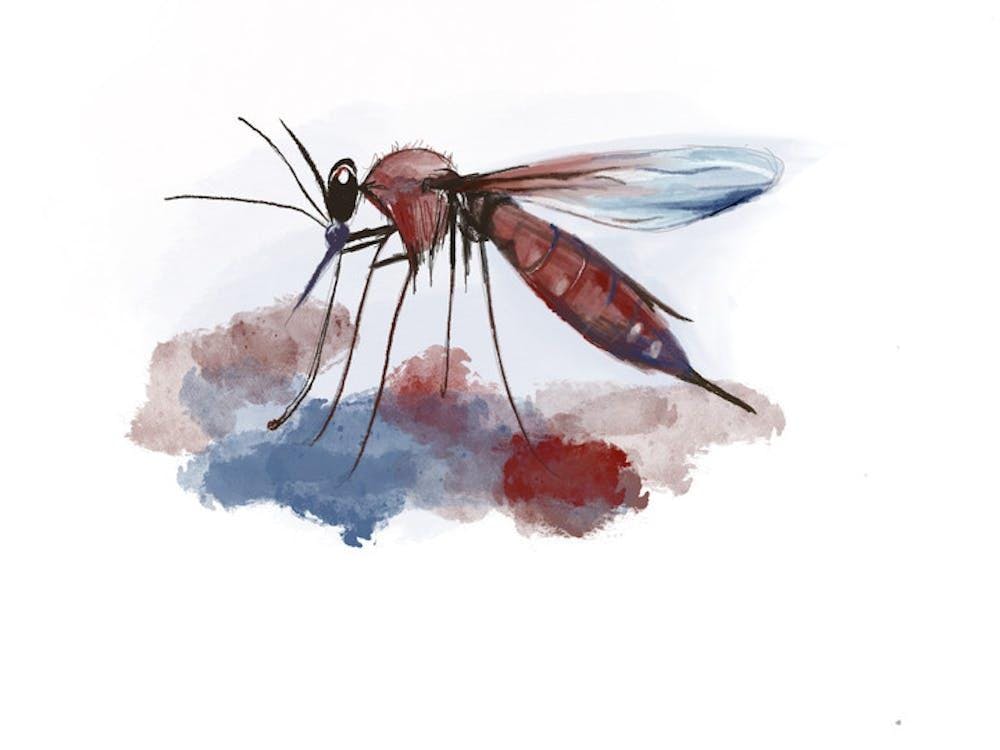West Nile Virus and Eastern Equine Encephalitis, two mosquito-borne illnesses, have returned to southern New England this summer.
The Rhode Island Department of Environmental Management and Department of Health have found 17 cases of EEE and nine cases of West Nile Virus in mosquito samples. Incidents of EEE and WNV have also been found in neighboring counties in Massachusetts and Connecticut, including in some that directly border Rhode Island. Officials encouraged people to take precautions to prevent mosquito bites.
“We’ve detected a higher than normal risk here, for EEE in particular,” said Al Gettman, mosquito abatement coordinator for the Rhode Island Department of Environmental Management.
EEE, which is rare, poses a higher risk for humans than WNV.
WNV is more common, but many of those infected are asymptomatic. Young children, the elderly and those with weakened immune systems are most at risk of developing serious symptoms from EEE or WNV, wrote Annemarie Beardsworth, a spokesperson for the Rhode Island Department of Health, in an email to The Herald.
Common symptoms of WNV include fever, head or body aches, vomiting, diarrhea or skin irritation, Beardsworth wrote. EEE symptoms are similar, with the addition of seizures, behavioral changes and drowsiness.
An individual in Providence County tested positive for WNV this August. Rhode Island state officials have not yet reported any human cases of EEE this summer. Nearby Massachusetts saw six human cases of WNV and four of EEE, while Connecticut saw one human WNV case and no human EEE reportings.
Rhode Island, Massachusetts and Connecticut have not yet seen any WNV or EEE deaths this summer. Last month, a New Hampshire man in his forties died following an EEE infection.
“All Rhode Islanders should be taking precautions to prevent mosquito bites and get rid of mosquito breeding grounds,” wrote Beardsworth. RIDOH encourages individuals to stay inside at sunrise and sunset, when mosquitoes are most active. “If you have to be outside at those times, wear long-sleeved shirts and long pants, and use bug spray with DEET,” Beardsworth wrote.
Putting screens on doors and windows, fixing holes in screens and placing mosquito netting over playpens and strollers can help prevent bites, Beardsworth added. Getting rid of standing water around houses and yards — draining gutters, turning over buckets and removing water from pools and fountains — can prevent mosquitoes from breeding.
“Even a very small container, like a five-gallon bucket … can make literally thousands of mosquitoes during the course of the summer,” Gettman said.
RIDEM and RIDOH conduct weekly testing across the state for EEE, WNV and Jamestown Canyon Virus — a third, rarer mosquito-borne disease. WNV has been impacting communities across the state fairly evenly, but rural areas are at a higher risk for EEE, Gettman said.
While about 50 mosquito species exist in the state, one species — predominantly found in rural areas — is primarily responsible for carrying EEE, Gettman explained. The mosquitoes feed on and infect birds, thus infecting other species of mosquitoes that feed on the same birds. Those mosquitoes can then transmit the virus to humans and other mammals.
WNV can be found in both rural and urban areas, Gettman said. Larvae of WNV-carrying mosquitoes are often found in underground stormwater catchment basins, which are common across urban environments.
To target WNV, the state distributes environmentally friendly bacteria that kills mosquito larvae. Packaged in small capsules, the bacteria are distributed to communities across the state, placed in stormwater basins at the start of summer and released over 90 days to stave off mosquito reproduction, Gettman said.
WNV has been found in the state every year for over two decades, Gettman said, but there are some years where Rhode Island doesn’t detect any EEE. There aren’t “firm answers” as to why EEE and WNV are sometimes at elevated levels, but some working theories point to fluctuations in rainfall and bird immunity, Gettman said.
But Gettman added that “that’s a theory that is certainly not clear.”
In the meantime, “people taking responsibility is of tantamount importance,” Gettman said. “People can do a lot to reduce their own risk.”

Ciara Meyer is a section editor from Saratoga Springs, New York. She plans on concentrating in Statistics and English Nonfiction. In her free time, she loves scrapbooking and building lego flowers.





